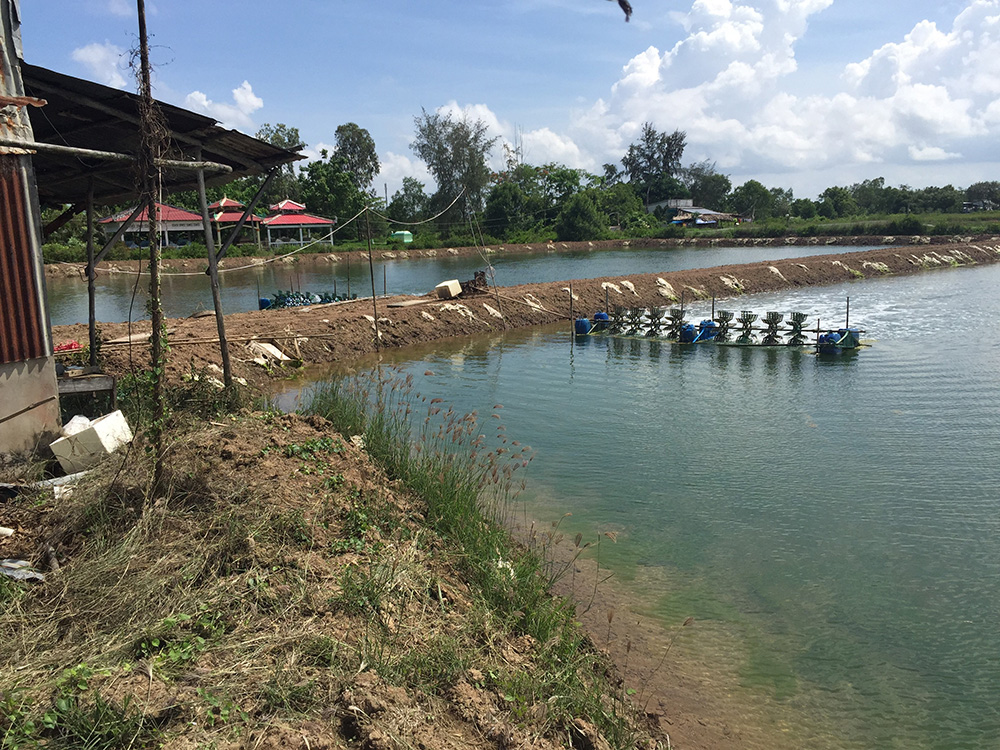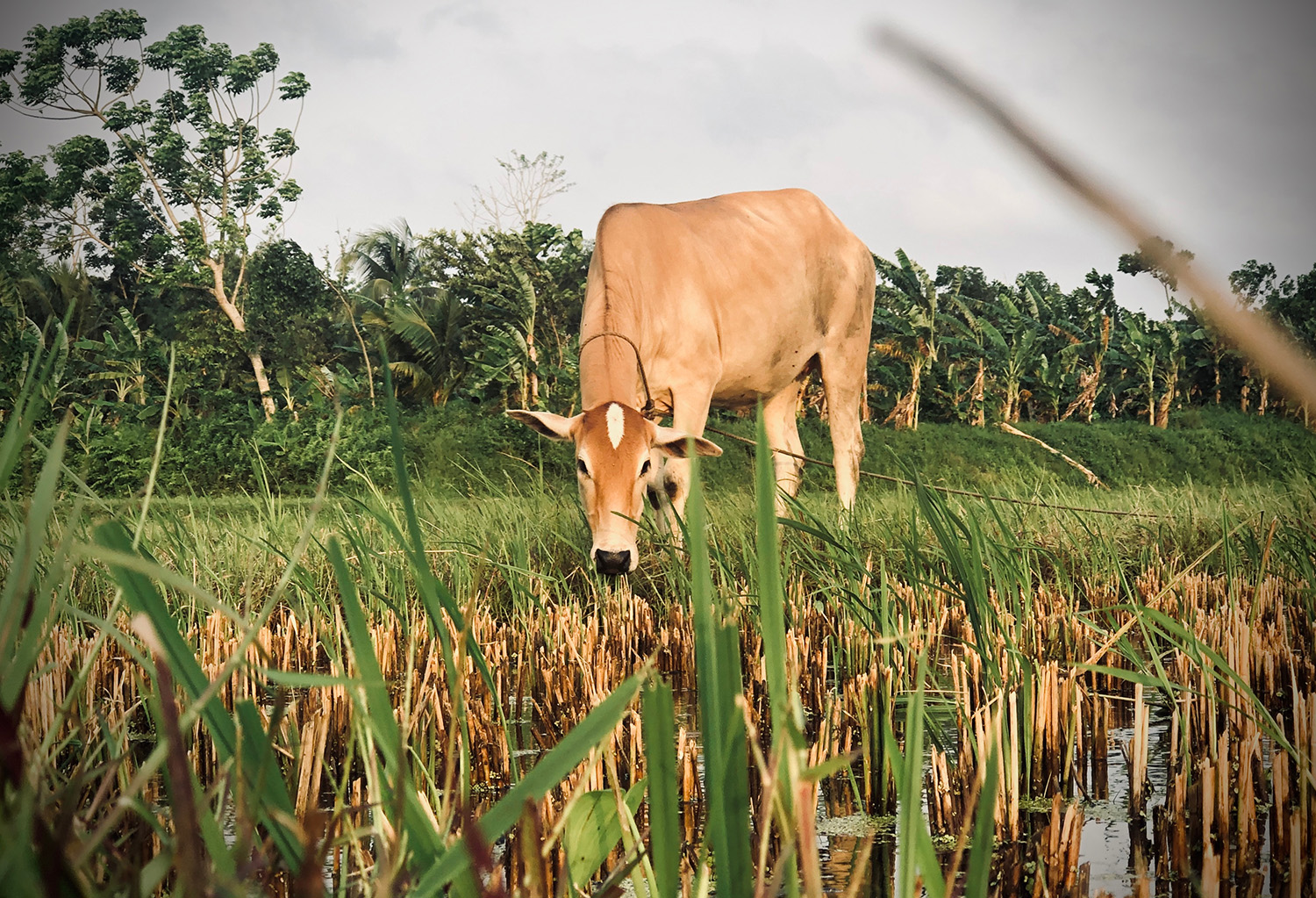
Longread
Deltas are under pressure
Climate change and sea level rises are putting delta areas such as Vietnam and Bangladesh under pressure. WUR is helping to make deltas future proof, for instance through what is known as the Food Systems Approach, which helps policymakers understand all the local factors and interests involved.
The bright green paddy fields of the Mekong Delta take pride of place in many travel brochures. The region was not always so fertile, though. Assisted by researchers from Wageningen, the delta developed at the end of the 1970s into Vietnam’s ‘rice bowl’. Vietnam now produces a lot more rice than it consumes, yet earns very little from the exports. The Vietnamese government is attempting to maintain the Mekong Delta’s position as a leading food production centre by cultivating other crops and products such as prawns and seaweed. That should work, says Gerardo van Halsema, a researcher at Wageningen Environmental Research who has been involved in projects in Vietnam for over twenty years. “But only if Vietnam takes account of external factors such as climate change, as well as the requirements of the global markets.”
The Vietnamese food system is much more complex now than it was 45 years ago. “After the war, in 1975, the country simply needed food,” explains Van Halsema. “It was a question of finding technological solutions for producing as much rice as possible.” That’s
where Wageningen was able to help. Scientists from Wageningen discovered early
in the eighties that the Mekong Delta, like the reclaimed coastal regions in the Netherlands, had a problem with acidification of the soil. They managed to resolve that by regularly flushing the soil with freshwater. Higher dykes were also built to protect the paddy fields against flooding by the Mekong River.
Unfortunately, your cookie settings do not allow the social media element to be displayed. check your settings.
Soil subsidence and salinization in deltas with intensive agriculture
The effect was phenomenal: between 1975 and 1995, Vietnam rose to become the world’s second-largest rice producer, after Thailand. However, sooner or later intensive agriculture in a delta will result in subsidence and salinisation, says Van Halsema. “On average, the Mekong Delta is one metre above sea level. If the land starts to sink any further, you’ll inevitably end up with flooding. And that process is only going to be exacerbated by climate change: the rainy seasons are becoming more extreme, meaning that the Mekong will burst its banks more easily. On top of that the sea level is rising and salt water will get onto the land and cause salinisation.”
Vietnamese sales markets are changing
Add to that the fact that the sales markets are changing. Not only do growing populations mean that more food is needed, but the markets are also demanding diversification with
vegetables, fruit and fish. According to Van Halsema, the Vietnamese authorities
are embracing the diversification that WUR has been advocating since the turn
of the millennium, above all because it means more secure livelihoods for farmers and the bottom line is more income for Vietnam. The farmers do need the government in that transition, for example for faster transport and for food safety certification.
Fighting the high water levels of Mekong River is futile
And then there is perhaps the government's most crucial task: it must protect the region against climate change. Fighting the high water levels – as has long been done in Vietnam – is futile, however, says Van Halsema. “It’s understandable that there’s a lot of frustration at that; after all, Vietnam has very little influence over the water levels of the Mekong River. The amounts of water flowing into the country are regulated by dams in China and Laos, so it’s better for Vietnam to focus on what it can do within its own borders. There’s no point just building the dykes higher and higher. It’s better to make room for the river and use the surrounding land for growing what will grow there.”
Making room for the river means that you will only get two rice crops a year rather than three and that you can also use the land for fish farming. That combination earns more too, Van Halsema tells us. To conserve groundwater, which is badly needed for drinking water, cultivation of freshwater fish such as tilapia and pangasius is being discouraged close to the sea and superseded by polyculture of shrimp and fish in saltwater pools. Van Halsema: “There’s a lot of interest in shrimp and the prices are good. If you then also farm them in mangrove forests, you can protect the coastline too.”
There’s a lot of interest in shrimp and the prices are good. If you then also farm them in mangrove forests, you can protect the coastline too.
Food Systems Approach
The Food Systems Approach brings together all the socioeconomic and environmental drivers in a single plan. Verhagen: “The main goal for Vietnam is for the Mekong Delta to be a rich food production region, but future-proofing it means you have to consider consumers, producers and the environment too. That’s why the Food Systems Approach distinguishes four objectives: 1) enough food for everyone, 2) a healthy diet, 3) equitable distribution of the costs and revenues within the food supply chain, and 4) sustainability and retention of biodiversity.”
Although it has not always been easy, the WUR researchers Verhagen and Van Halsema see that the Food Systems Approach is slowly gaining a foothold. Contacts between scientists and the government are intensive. Especially after the extreme flooding of 2011 and the extreme drought of 2016, Hanoi understands that sustainability is needed – for the food supply system too. In any event, this big switch will have the full backing of the farmers, says Van Halsema. “Time and again, they show just how well they can adapt to new policies, the effects of climate change and new market demands. Every year, 14 per cent of their land use changes – that’s incredibly high.”
Vietnam is one of two case studies in the ‘Deltas under Pressure’ project, which falls under the KB programme Food and Water Security. Catharien Terwisscha van Scheltinga (Wageningen Environmental Research) is its project leader. She tells us about the second case study, which is taking place in Bangladesh. “We’re using the Food Systems Approach in both deltas to improve our understanding, linking the production system at the local level to the national level. In the case of the Mekong, we started at the local level, whereas in Bangladesh we’ve started from the national perspective.”

Photo: Jan Verhagen
Bangladesh Deltaplan 2100
The government there in fact launched a ‘Bangladesh Delta Plan 2100’ in 2018 that steers the new programmes and plans. Terwisscha van Scheltinga: “For a long time, Bangladesh was one of the poorest countries in the world. Now that it’s slowly becoming a middle-income country, there’s scope to consider the future. That’s where WUR comes into the picture: how can the long-term view taken by the Delta Plan be implemented and what will that mean on the ground for the farmers? We’re working with Solidaridad to achieve that, because they’re an organisation that’s been working in the Bangladesh delta region for some time now.”
The priority in the fertile delta had for many years been agriculture, but rising sea levels, salinisation, changes in temperature and precipitation, flooding and drought mean that the area’s agriculture is no longer secure. That is why Solidaridad is working on better incomes and more food for smallholders (in horticulture, fisheries, agriculture and dairy). The farmers learn how to grow multiple crops successfully, for example. They can sell some of that and eat the rest themselves. Solidaridad helps the farmers meet the quality and food safety requirements for selling on the national and international markets, which helps reduce food waste. This is highly important in particular where products need to be chilled, such as dairy and prawns.

Grass grows better on salty soil than rice does, but will the cows still eat that salty grass?
The same problems in delta areas throughout the world
WUR is looking at how all the factors fit together and what the possibilities are for agriculture. Terwisscha van Scheltinga: “In the rainy season, rice is still grown, for example, but in the dry season the soil is too dry and salty for many crops. Grass grows better on salty soil than rice does, which makes raising cattle seem logical – but will the cows still eat that salty grass? And if so, is it still healthy for them or will it make them more likely to get sick? Those are all questions that need to be sorted out and where you need to bring various experts together; the soil expert may know about salinisation, for instance, but not about cattle, and the livestock expert understands cows but not salinity. We bring all these various experts together to ultimately come up with guidelines on how to consider food systems in delta areas together with all the stakeholders. We have made a storyline that we can share with other countries, because these problems affect delta areas throughout the world.”
They are by no means simple problems, according to Terwisscha van Scheltinga: “After all, it’s not only about securing food supplies. It’s also about healthy diets, incomes for farmers, biodiversity and climate adaptation – in other words, the four areas targeted by the Food Systems Approach. Because of climate adaptation, you’d want to give rivers more room, for example, but that is at the expense of agricultural land while population growth is increasing the demand for food as well.”
Ultimate aim is enough food in the future
The ultimate aim of all these efforts is ensuring that all humanity still has enough food in the future. Terwisscha van Scheltinga: “Our way of thinking combines the second Social Development Goal (SDG) – no hunger – with the sixth – clean water for all. What I’m looking forward to is how this will get further translated for the UN Water Conference, which takes place this March. Water and agriculture will be important themes there too, so we – as WUR – will certainly be able to make a contribution. We want to help governments devise solutions to these types of complex questions, because – let’s not forget – we’re also facing land subsidence and salinisation in the Dutch delta, so it’s a very topical issue in our own country.”